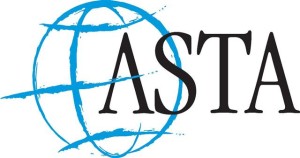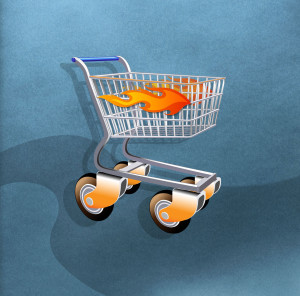April 17th, 2014 by Elma Jane
Issuers participating in the MasterCard Rewards Platform can pursue greater engagement and value in their programs through a partnership MasterCard is announcing today with Points International Ltd. The companies say they struck the deal to take advantage of the popularity of travel and related experiences. Under the agreement, participating issuers can let their cardholders to exchange and trade earned airline miles, hotel points and loyalty currencies.
Travel happens to be one of the most popular redemption options for points on most programs today. So this is really about enabling consumers to get even more choice with regard to getting some redemption options.
Issuers individually will roll out the program later this year based on their own schedules. Any of the hundreds of banks that use the MasterCard Rewards Platform are eligible to participate. Participation is voluntary.
Enhanced flexibility in cardholder reward redemptions was a key driver behind the initiative, what this partnership allows to do is enable all customers that have points that they’ve gained from spending on their credit cards or debit cards to then exchange those points into a miles program or a hotel program that they tend to always have a lot of other points accumulated already.
Variable Exchange Rates
Cardholders will be provided with a conversation ratio applicable to the pair of rewards being exchanged. Ratios will differ by redemption transaction. Consumers also may choose to transfer small buckets of rewards points into one program and the rest in other programs. They can do transfers multiple times and across multiple rewards providers.
Posted in Best Practices for Merchants, Credit card Processing, Gift & Loyalty Card Processing, Travel Agency Agents Tagged with: airline, airline miles, banks, cardholder, credit cards, debit cards, hotel, loyalty, MasterCard, platform, programs, reward, rewards, transaction, transfers, travel, travel related
September 26th, 2013 by Elma Jane
5 Effective and Unusual Ecommerce Pricing Strategies
Most online retailers set pricing using the cost-plus or the value-based method. While these work well, there are several other ways to price products. Here are the five effective and unusual ways to price products on your ecommerce site.
1. Name your Price
This is a variation of the PWYW model, where the price has to exceed a threshold to get the product. This threshold price is not shown to shoppers to allow them to name their own price. This model has been successfully used in the travel industry, among others, where availability of airlines, hotels, and travel dates is based on the named price. This strategy can also work well for online retailers that are selling the following types of products.
Defined Price Ranges – Gifts site where NYP can be a guide to show products that are within that price range. NYP can be used as a guided selling tool to show gifts within a defined price range. The retailers can use price discrimination in combination with this strategy to increase their profits.
High Perceived Value – The perceived value of the product is much higher than the cost of procuring it, prompting the consumers to name a higher price. This can apply to books, music, and food products.
Imprecise Value – The products can be sold at a wide range of prices and still generate a profit. This could include one-of-a-kind products or art, where it is difficult to assess the value.
2. Pay What You Want
The pay-what-you-want strategy — PWYW — has been around for a while but has not been used heavily in the online retail space. A well-publicized offline success is Panera Bread restaurants, which has used this pricing strategy in a few of its restaurants. In the online world, Humble Bundle a music and game store has been using this too. In almost all cases, this strategy did not result in a significant profit or loss but led to a lot of free marketing. That is one of the big reasons for adopting this strategy in retail. There are several types of online retailers that can benefit.
Limited Categories – This strategy does not need to be implemented for your complete online store. It can be limited to a few products or a few categories that are the best fit.
Link to Charities – If your site shares revenue with charities, then PWYW can work, as customers often pay more to help the charity, increasing your share of the revenue in the process.
Offer an Incentive – You can also tie the PWYW strategy with an incentive…such as an additional product once the price exceeds a certain threshold, say $10. This threshold can be kept secret or made public on the site as a marketing tactic to encourage customers to pay more.
Proper Customers – If you believe that your customers are fair-minded and understand the value of your products, then PWYW might be effective.
3. Personalized Pricing
This is a relatively new strategy where specialized yield management algorithms are used to personalize the price offered to each visitor. With the rise of Big Data, most of the personalized pricing is done in real-time by analyzing a variety of factors like customer loyalty, device used by the shopper, customer preferences, history of purchases, and so on. This strategy is best suited for the following types of online retailers.
New Products Regularly – There are many products in the online store, with new products introduced regularly. This makes personalized pricing more effective as repeat customers see the new product and the new promotional pricing to reward their loyalty, or to encourage a first purchase for new ones.
Repeat Customers – Customers know that they will be rewarded with personalized pricing and promotions based on the loyalty to your site.
Wide Profit Margins – Products are sold with good margins, allowing the retailer to offer discounts at any time. For example if the product is sitting in a shopper’s cart for a few days, the retailer might offer a discount or drop the price to encourage the shopper to complete the purchase.
4. Flat Pricing
Flat pricing is a strategy where a limited number of prices are used for all product offerings, such as in dollar stores where every product is priced at one dollar. This strategy works well in the following situations.
Many Similar Products – Your site sells a wide variety of products that are priced nearly the same. In this scenario, flat pricing is simpler to manage, easier for consumers, and also results in greater profit.
Subscription Pricing – A new trend in online retail is subscription pricing, where customers can sign up for a flat price of, say, $25, $49, or $99 to receive a set of products every month.
5. Free
Several software companies are using free pricing successfully where the software is given away for free and customer is charged either for support or for premium features. A free pricing strategy can be an effective strategy for ecommerce merchants to attract customers by following the following guidelines.
Basic vs. Premium Versions – This strategy can be effective if the basic version is free and the customer pays for a premium version. The life insurance industry uses this approach, where a basic $10,000 insurance is often free. If even a small percentage of customers buy the premium offering, the insurer makes a profit.
Emphasize Consumables – Products that have durable and consumable components can benefit from a free pricing strategy, if customers can only buy both pieces from your site. For example, Gillette sometimes offers shaving razors for free since only Gillette shaving blades will work with its razors. On the other hand, it does not make sense to give away a laser printer for free because the printer paper and toner can be bought from anywhere.
Loss Leader – Use this strategy to offer products for free using the loss leader model. Customers come to the site to get the free products and once they are on the site, you can up-sell or cross-sell them other products.
Seasonal Products – If your site sells seasonal products, then this strategy can drive traffic. For example, a retailer could give away free U.S. flags during the July 4th holiday to generate traffic, while also pushing other non-free July 4th merchandise.
Posted in e-commerce & m-commerce, Electronic Payments, Travel Agency Agents Tagged with: Airlines, e-commerce, hotel, online store, pricing, subscription, travel industry
September 26th, 2013 by Elma Jane
Asta‘s Global Convention held in Miami FL, September 16-19, 2013 with National Transaction Corporation’s President, Mr. Mark Fravel in the Guest List.

ASTA American Society of Travel Agents and Agencies
With ASTA’s Global Convention held last September 16-19, 2013 in Miami Florida, National Transaction Corporation accessed to a powerful and inspirational collection of unrivalled 36 speakers including…Hilary Rodham Clinton, Former Secretary of State and Former U.S. Senator from New York. With high quality travel industry content and peer-to-peer networking opportunities, National Transaction Corporation’s Business has moved forward through these thought provoking sessions, breakouts and networking events.
Headed by NTC’s President, Mr. Mark Fravel, together with his Account Executives; Chelsie Fravel, Megan Fravel and Richard Delos Santos, they actively attended all the sessions that are involved in the Convention. National Transaction Corporation handed out around 300 Business Cards with Micro Screen Cleaner as part of their promotional giveaways in their very own NTC booth.
With the opportunity for over 1,400 ASTA CEOs, Presidents and Agency Owners that has come together with leading travel suppliers, the Convention influenced critical issues of our day. Engaged in instructive and new media technologies that impact our industry and shared innovative ideas with like-minded professionals. NTC a Credit Card/Electronic Payment Processing Merchant Account Services get to meet key people for Sabre, a Global Distribution System which products and services enable agencies to streamline accounting processes, build a powerful marketing database, and send targeted marketing pieces with measurable results. With the convention GUEST LIST which includes NTC and other Business Agencies and Companies like Car Rental, Cruise, Hotel, Insurance, Marketing Magazine, Travel, and a lot more are the individuals in which you want to meet and build your organization’s future.
With the ASTA Global Convention, it unites members and travel industry professionals to create a conference for the most influential buyers in the industry. As the leading advocate for travel agents, the travel industry and the traveling public, ASTA and its members represent 80% of all travel sold by travel agencies in the United States.
The ASTA Global Convention is reaching new heights through innovative education, captivating luminaries and diverse networking opportunities. ASTA continues to promote travel around the globe and to remind the traveling public of the value of professional services provided by travel agents and tour operators.
Posted in Travel Agency Agents Tagged with: agencies, agency, agent, airline, ASTA, car rental, clinton, credit card, cruise, hillary, hotel, Mark Fravel, merchant account, National Transaction Corporation, Processing, travel


